Case reports
Chapter II.1: Tears Film

Soft contact lens with dehydrated area
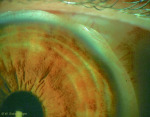
Dryness and contact lenses
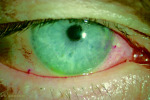
Dry eye disease with a punctal plug (occlusion of the tear duct)
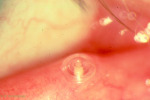
Punctum Plug with high magnification
Chapter II.3: Eyelids

Inflammation of the eyelid (blepharitis) Grade 1

Inflammation of the eyelid (blepharitis) Grade 4
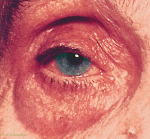
Allergic inflammation of the cutaneous eyelid
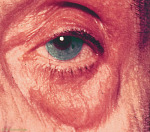
Allergic inflammation of the cutaneous eyelid

Incomplete eyelid closure (schematic)
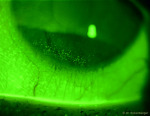
Incomplete eyelid closure
Chapter II.4: Conjunctiva

CLIPC - Grade 4

CLIPC - Grade 4
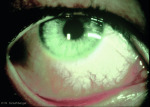
Right Eye: Grade 0

Left Eye: Grade 4
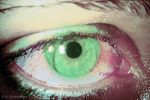
Local conjunctival injection Grade 3
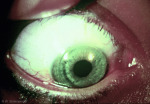
Irritation-free zone conjunctiva superior (same eye)

Conjunctival punctate keratitis

Edge defect in a hydrogel contact lens

Drawing of pinguecula

Prominent pinguecula

Drawing of pterygium

Pterygium with injection

Nevus at 3 o’clock
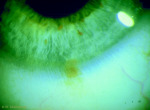
Nevus in the limbal region at 6 o’ clock

Severe local redness observable in primary eye position

Severe local redness observable when patient looks sideways
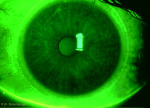
Stain from a too tightly fitting soft contact lens
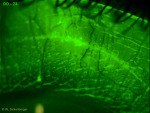
Heavy stain with conjunctival epithelial flap (CEF) from wearing a soft contact lens
Chapter II.5: Cornea

3/9 o’clock punctate keratitis (schematic)

Grade 3 central and peripheral punctate keratitis, confluent at 4 o’clock

Localized punctate keratitis with desiccation (schematic)

Localized punctate keratitis, Grade 2

Superficial, diffuse punctate keratitis (schematic)
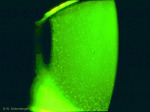
Diffuse punctate keratitis, Grade 2

Central punctate keratitis (schematic)

Central punctate keratitis, Grade 3, with impression left by the edge of the contact lens

Deep, diffuse punctate keratitis (schematic)

Grade 4 punctate keratitis due to a toxic reaction
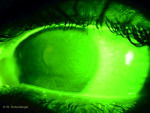
SICS - diffuse distribution
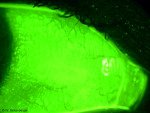
SICS often occurs in connection with punctate keratitis

Air bubble dimple veiling (schematic)

Air bubble dimple veiling, without lens

Air bubble dimple veiling beneath rigid contact lenses with fluorescein

Air bubble dimple veiling beneath rigid contact lenses
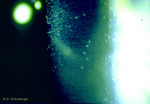
Mucin balls under silicon hydrogel lenses with white light

Impressions from mucin balls without contact lenses, after staining with fluorescein
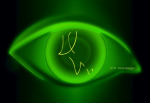
Impression from a foreign object (schematic)

“Scoring” from a foreign object

Imprint of a hair

Deep foreign object impression

SEAL in white light

SEAL after being stained with fluorescein

Erosion (schematic)

Extensive corneal erosion
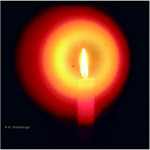
“Halo vision” in cases of corneal oedema

Microcysts and vacuoles, Grade 3
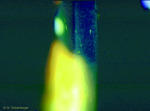
Striae and folds, Grade 3
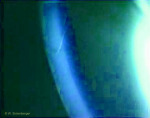
Individual striae

Pronounced CCC with PMMA contact lenses

CCC after removing contact lenses
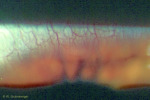
Beginnings of vascularization around 12 o’clock

Massive corneal damage with grade 4 neovascularization

AIK (schematic)
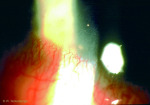
Peripheral infiltrate at 6 o’clock

IK (schematic)

Infiltrate at 5 o’clock with typical limbal injection

MK (schematic)
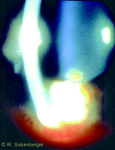
Central corneal ulcer

Active herpes infection with tree-shaped epithelial lesions

Subepithelial scarring zone following secondary infection
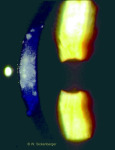
Central nummuli following KCE
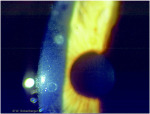
Central nummuli at high magnification
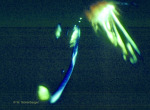
Central corneal scar of traumatic origin in side view
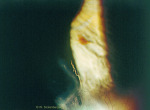
Angular corneal tear at 5 o'clock with wrinkling
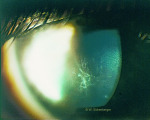
Corneal scars with Descemet’s folds in keratoconus

Corneal scar in grade 4 keratoconus in lateral view

Corneal transplant with lateral observation

Scars from T-incisions 12 months post surgery (40-fold)

Precipitates in an optical slice
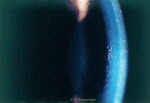
Precipitates in an optical section
Chapter III.3: Deposits

Lipid drops in the tear film (200-fold magnification with endothelial microscope attachment)

Lipid drops on the frontal surface of the lens
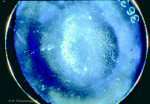
Extensive protein deposit, 6-fold magnification, dark field
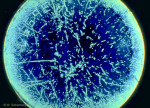
Netlike protein deposits, 6-fold magnification, dark field
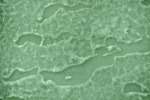
Mucous substances (mucins) on the surface of a hydrogel lens (SEM image)
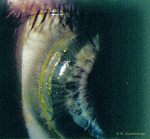
Deposit at 9 o’clock in the lenticular area of a rigid contact lens (+6.0dpt)
Chapter III.4: Deposits

Hydrophobic areas on rigid contact lenses due to eyeliner residue
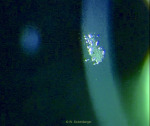
Cosmetic residue on a soft contact lens
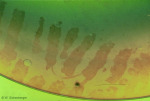
Peripheral metal deposit with discoloration from nicotine, 50-fold magnification, bright field
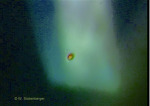
Central metal deposit with discolouration

Aspergillus niger, 200-fold magnification, bright field
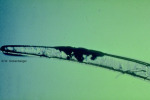
Aspergillus niger (cross-section of penetration through the contact lens)
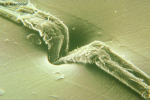
Aspergillus niger, penetration in lens matrix (SEM image)

Candida albicans at 12x magnification

Rust spot on a contact lens
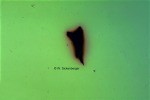
Soft lens, metallic foreign object with rust ring

Rust spot, 200-fold, interference contrast

Cross-section of a contact lens through a rust spot (200-fold magnification)
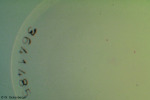
Metal deposit in the engraving (6-fold magnification)

Metal deposit, 50-fold magnification, bright field
Chapter III.5: Mixed deposits – Jelly bumps
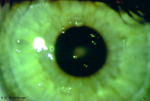
Jelly bumps on a conventional hydrophilic contact lens
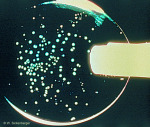
Jelly bumps at 6-fold magnification
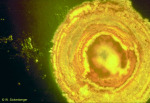
Top view of a jelly bump

Sectional image of a jelly bump in a cross-section of a contact lens (200-fold)